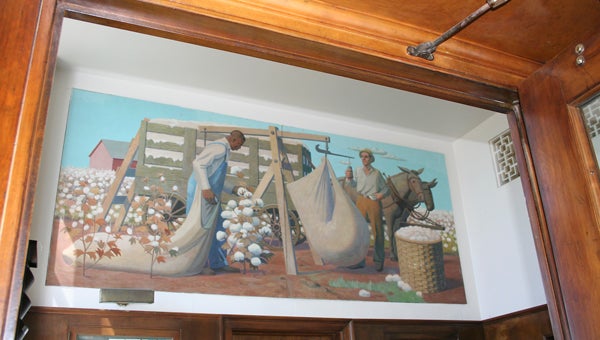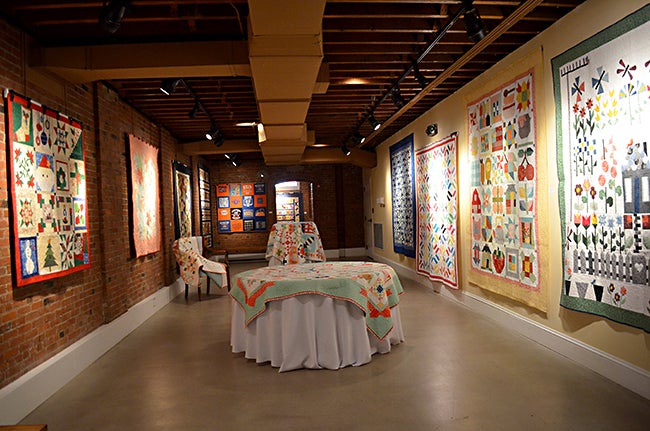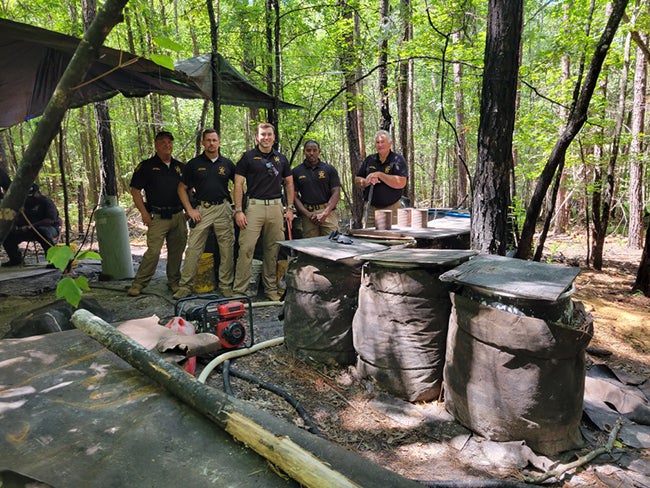The ‘New Deal’ a good deal
Published 11:00 pm Friday, April 5, 2013

Tuskegee’s Post Office mural, “The Road to Tuskegee,” was the 1937 work of Montgomery artist Anne Goldthwaite. Photo by Sandy Scott and reprinted with permission of Alabama Living.
When Franklin D. Roosevelt accepted the Democratic nomination for president in 1932, he promised a “New Deal” for the American people. Seven decades have come and gone and not many Americans give much thought to Roosevelt or his “New Deal.”
However, Roosevelt left a seal of his promise on post offices all across the county that were built during his administration in the 1930s.
For nearly a decade, from 1934 until 1943, more than 1,300 murals depicting the country’s history and way of life were painted. Twenty-four of those murals were in Alabama.
The murals were a part of Roosevelt’s plan to help lift the country out of the Depression by giving artists work and making art accessible to all people.
The artists worked for the Section of Fine Arts, known as “the Section.” Their fee was gleaned from the one percent of the building construction funds that were set aside for the embellishment of the post offices and was usually around $650 to $750.
Morgan Drinkard, Johnson Center for the Arts executive director, said that many of the artists chosen for the post office murals were unknowns while others, including Jackson Pollock, were well known.
“Anne Goldthwaite, a well-known Montgomery artist, was selected for three post office murals, including the mural at the Tuskegee Post Office,” Drinkard said. “The murals were supposed to depict the town’s history or heritage, not the hard times associated with the Great Depression.”
Drinkard said the artists did a lot of background work in preparation for their murals.
“Whenever it was possible, the artists would spend time in the towns and talk with the people in an effort to come up with an acceptable design,” she said. “Sometimes, the designs didn’t meet the approval of the post masters. Many of the designs were of people at work. None of them showed the reality of the Depression. These murals were mainly of history and hope.”
The murals were placed above the office of the postmaster and most always needed his nod of approval.
The colorful murals brought art front and center during very dismals times.
“These murals were Americana,” Drinkard said.
Time and the elements have taken a toll on some of the murals and they are in need of restoration. Some have been moved to other locations, some are missing.
Locally, “New Deal” Post Office Art can be seen in Ozark, Enterprise and Luverne.
However, the Enterprise mural has been moved to the public library. Opp had a mural but it is missing.
Michael Rodgers, a reporter for the Luverne Journal, said that the Section mural in the Luverne Post Office is titled “Cotton Field,” and was painted by Arthur Getz in 1942.
“In addition to the Luverne mural, Arthur Getz also won four contracts for New Deal murals – three for post offices and one for the 1939 Worlds Fair,” Rodgers said. “Arthur Getz was best known as a cover artist for ‘The New Yorker’ magazine. He is credited with 231 covers between 1938 and 1988.”
Getz received the commission for the Luverne Post Office based on designs he had submitted for a competition for the War Department building.
Being from the North, Getz had to acquaint himself with King Cotton. He was warned that the people of Crenshaw County knew, first hand, all about cotton– how it looked, how it felt and how it was picked, weighed and hauled to the gin.
Getz learned his lessons well and no fault was found with his artwork.
Getz’s commission for the Luverne mural came in May 1941. However, in February 1942, he received greetings from Uncle Sam and had to petition the draft board to let him complete the mural before marching off to war.
Getz completed the mural only a week before he was inducted into military service.
Wiley White, Johnson Center development coordinator, said the Post Office Art served a valuable purpose.
“The post office is a very public place and many people were exposed to art who probably never would have been,” she said. “The Section gave artists opportunities to work and it also preserved bits of the history of towns all across the country through art.”
White said murals have made a comeback in recent years.
“Murals are being used to preserve the history and heritage of towns and cities all across the country today just as they did back during President Roosevelt’s administration,” she said. “Murals were a Good Deal then and they are a good deal now.”





